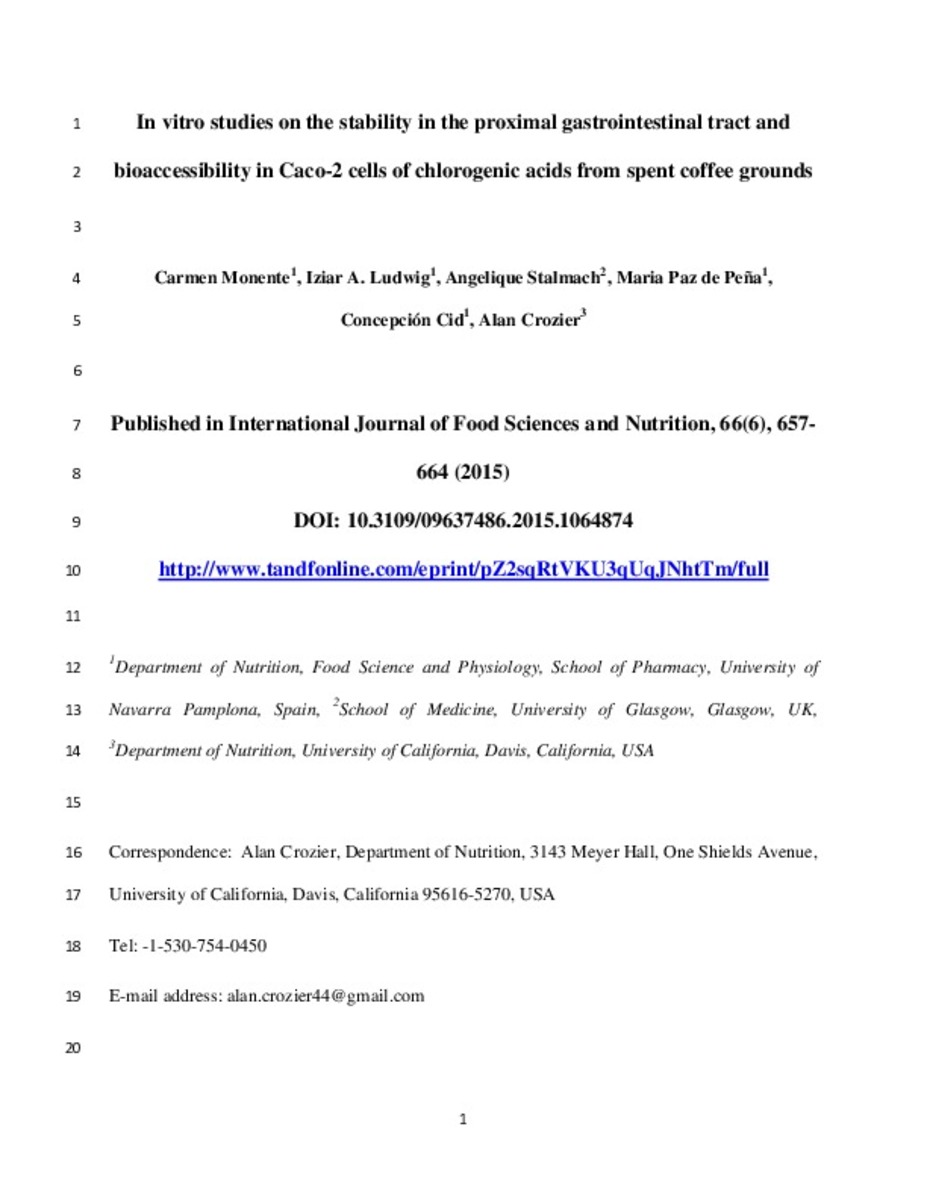In vitro studies on the stability in the proximal gastrointestinal tract and bioaccessibility in Caco-2 cells of chlorogenic acids from spent coffee grounds
Keywords:
Spent coffee grounds
In vitro gastrointestinal stability
In vitro bioaccessibility
Chlorogenic acids
Publisher:
Taylor & Francis
Editorial note:
This is an Accepted Manuscript of an article published by Taylor & Francis in Int J Food Sci Nutr on 23 Jul 2015, available online: http://wwww.tandfonline.com/10.3109/09637486.2015.1064874
Citation:
Monente C, Ludwig IA, Stalmach A, de Peña MP, Cid C, Crozier A. In vitro studies on the stability in the proximal gastrointestinal tract and bioaccessibility in Caco-2 cells of chlorogenic acids from spent coffee grounds. Int J Food Sci Nutr. 2015;66(6):657-664
Statistics and impact
0 citas en

Items in Dadun are protected by copyright, with all rights reserved, unless otherwise indicated.







